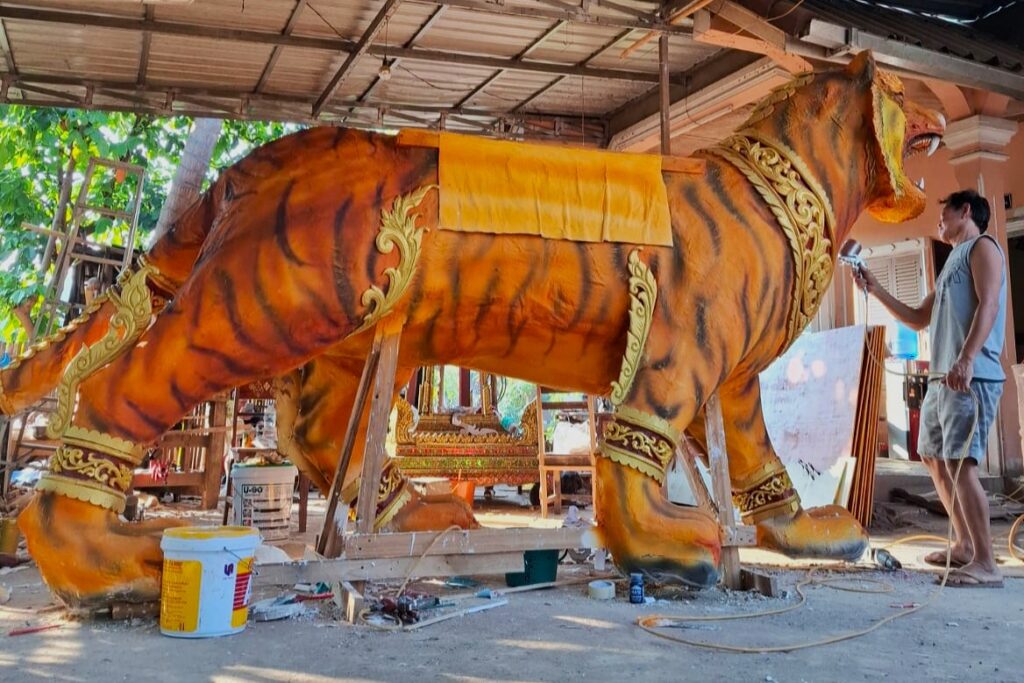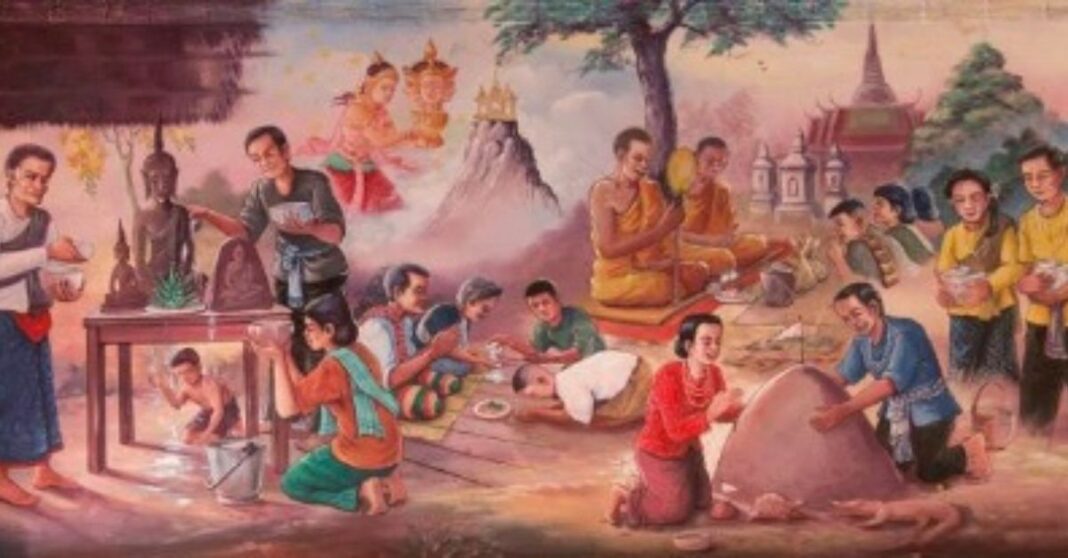Every April, when the weather hits its peak and the heat sets in, the streets of Laos fill with people, celebration, and plenty of water. It’s Pi Mai Lao — the Lao New Year — a three-day celebration marked by deep-rooted spirituality, joyful chaos, and a reverence for the past, present, and future.
Also known as Boun Pi Mai, the festival is the most anticipated event of the year. From April 14 to 16, families reunite, towns transform into playgrounds, and ancient legends take center stage in colorful parades.
But beyond the water fights and festivities lies a rich story, one that ties together myth, religion, and community.
Day One: Letting Go of the Old
The first day of Pi Mai marks the end of the old year. Across the country, homes are swept clean, food is prepared, and offerings are brought to temples in a quiet but meaningful ritual of readiness.
At Buddhist temples, monks carry sacred Buddha images from the sim (the main hall) and place them in decorative shrines. Here, locals gather for the Song Pha ceremony, gently pouring scented water mixed with flowers over the statues. It is a gesture of respect and a prayer for blessings.
The water used in this ritual is considered holy. Many bring it home to sprinkle on their families and around the house, a symbolic act meant to wash away bad luck and cleanse the spirit for the year ahead.

Day Two: The Day of No Day
The second day, 15 April is known as Wan Nao, or “the day of no year.” It doesn’t belong to either the past or the future, a transitional space between old and new.
Traditionally, this is a time for continued cleaning, reflection, and respect. Elders encourage younger generations to avoid napping, as it’s believed laziness on this day could bring misfortune in the coming year. Instead, the young are urged to stay active, pay visits to village elders, and perform blessings by pouring water over their hands while offering good wishes.
Then, the fun begins. Streets become stages for spontaneous water fights. With buckets, hoses, and water guns, people of all ages join in a citywide soaking, not just for fun, but to symbolically cleanse the past and welcome the new.
Day Three: Welcoming the New Year
The third and final day is the official beginning of the new year. It’s a day filled with symbolism and celebration, as towns and cities across Laos host the much-anticipated Nang Sang Khan parade.
Chosen for her grace and poise, Miss Lao New Year rides through the city on a symbolic animal, representing good fortune and the spirit of the holiday. Her presence reflects an ancient story passed down through generations, one that still guides the essence of Pi Mai.
At home, many families gather for a Baci ceremony — a spiritual ritual to call good spirits back into the body and secure good luck for the months ahead. Elders are offered kind words, small gifts, and apologies for any misdeeds from the previous year. The mood is hopeful, sincere, and heartwarming.
By evening, the sacred Buddha statues are returned to the temple, signaling the close of the holiday and the return to daily life.
The Legend Behind the Celebration
Pi Mai Lao is steeped in a myth that helps explain many of the holiday’s most iconic customs. The story begins with King Kabinlaphom, a powerful figure who lost a challenge and was beheaded. His head, said to possess destructive power, could never touch the ground, sky, or sea.
To prevent catastrophe, his seven daughters placed it on Mount Sumeru, a sacred mountain in Buddhist cosmology. Every year since, one daughter takes her turn to care for the head during Lao New Year. This symbolic act brings blessings, happiness, and good weather for the year ahead.
In modern celebrations, this legend is reenacted through the Nang Sang Khan parade. The daughter who leads the parade is determined by the day of the week on which the new year begins.
Each of the king’s daughters is uniquely represented:

Monday: Kholaka Thevi, in yellow, rides a tiger.
Tuesday: Haksod Thevi, in light red, rides a pig.
Wednesday: Montha Thevi, in emerald green, rides a donkey.
Thursday: Khilini Thevi, in greenish-yellow, rides an elephant.
Friday: Khimita Thevi, in white, rides a buffalo.
Saturday: Mahothone Thevi, in black, rides a peacock.
Sunday: Thoungsa Thevi, in red, rides a Garuda.
Each carries symbolic objects and has distinct traits, adding color and meaning to the grand parade.
While tourists may be drawn to the spectacle of water fights and parades, for Lao people, Pi Mai is much more. It’s a spiritual renewal, a chance to reconnect with family and community, and a heartfelt wish for peace, health, and happiness in the year ahead.



